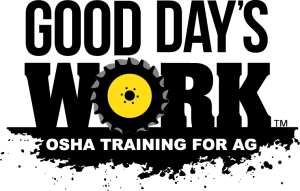Introduction to Cut-Off Tools
 Cut-off tools are a must-have for both industrial jobs and DIY projects, valued for their precision, power, and speed. These high-performance tools make quick work of cutting through metal, wood, plastic, and more—saving you time and effort. Working on a car, tackling construction, or sprucing up your home workshop? A cut-off tool is your ultimate sidekick.
Cut-off tools are a must-have for both industrial jobs and DIY projects, valued for their precision, power, and speed. These high-performance tools make quick work of cutting through metal, wood, plastic, and more—saving you time and effort. Working on a car, tackling construction, or sprucing up your home workshop? A cut-off tool is your ultimate sidekick.
Also called abrasive saws, they use powerful wheels or discs to deliver clean, accurate cuts every time. Need to slice through a steel pipe, trim wood for a custom furniture piece, or cut plastic for a home improvement project? There’s a cut-off tool designed to meet the specific demands of your task.
When selecting a cut-off tool, it's important to consider the type of material you'll be working with and the tool's compatibility with different cutting discs. Cutting discs come in various designs, each optimized for specific materials, so choosing the right one is key to achieving the best results.
The key to success lies not just in the tool itself but in how you use it. When handled correctly, cut-off tools don’t just complete the job—they elevate its quality, making your work faster, more precise, and more professional.
So, gear up, stay safe, and let your cut-off tool take your projects to the next level!
Recognizing the Risks



- Lacerations or Amputations
One slip of the cutting disc, spinning at high speed, can lead to serious injuries. Stay focused and cautious to keep your hands safe.
- Eye Injuries
Flying sparks and shards are no joke! Without proper eyewear, your eyes are at serious risk. Always gear up before you cut.
- Respiratory Issues
That cloud of dust may seem harmless, but it’s not. Fine particles can damage your lungs if you don’t wear a dust mask.
- Hearing Damage
Loud and powerful, these tools can take a toll on your ears. Without ear protection, prolonged exposure can lead to hearing loss.
Mastering Cut-Off Tool Safety

1. Gear Up with the Right PPE
Safety starts with the right personal protective equipment (PPE). Don’t skip this step—it’s your first line of defense!
- Safety Goggles or Face Shields: Keep your eyes safe from flying debris.
- Cut-Resistant Gloves: Protect your hands from cuts while keeping a secure grip.
- Ear Protection: Shield your ears from loud noise with earplugs or earmuffs.
- Dust Masks or Respirators: Breathe easy by blocking harmful dust and particles.
2. Clear the Deck
A tidy workspace isn’t just nice—it’s critical for safety.
- Light It Up: Good visibility helps you work more precisely.
- Clamp It Down: Secure your materials to keep them steady and prevent slips.
- Declutter: Clear away extra tools and distractions to focus on the task at hand.
3. Master Safe Handling
Using cut-off tools is all about precision and control. Let’s get it right!
- Find Your Balance: Stand with your feet shoulder-width apart for stability.
- Two Hands on Deck: Always grip the tool firmly with both hands.
- Stay Smooth: Avoid twisting or overreaching—controlled movements prevent mishaps.
4. Inspect Before You Start
A quick pre-use check can save you from big trouble.
- Check the Guards: Make sure all safety guards are secure.
- Inspect the Disc: Look for cracks or wear—replace damaged discs immediately.
- Proper Mounting: Ensure the disc is tightly secured to avoid accidents mid-task.
5. Stay Laser-Focused
When the tool’s in action, distractions are not an option.
- Let the Tool Work: Don’t force it—let its speed and design do the job.
- Cut Away from Yourself: Always cut in a safe direction and keep others out of the tool’s path.
- Play It Safe: Power off and unplug the tool before changing discs or performing maintenance.
Lessons from Real-Life Incidents
Case Study 1: The Costly Glove Oversight

Imagine this: a construction worker cutting metal when suddenly, sparks fly, and a sharp fragment ricochets straight into his hand. The result? A painful injury that could have been avoided if he had been wearing cut-resistant gloves. A small precaution could have made all the difference.
Case Study 2: When the Wrong Disc Makes an Impact

In a metal shop, a technician used the wrong-sized disc for the job. Halfway through, the disc shattered, sending debris flying. Although the injury was minor, it served as a powerful reminder of why proper disc selection and secure mounting are critical. One mistake can change everything.
Best Practices for Cut-Off Tool Safety

- Thorough Training
Set your team up for success by providing hands-on training on the tool, essential safety tips, and how to avoid common hazards.
- Frequent Safety Checks
Stay ahead of risks with regular inspections of tools and workspaces to catch potential issues before they happen.
- Eye-Catching Signage
Place bold, clear reminders about PPE rules and operational guidelines right where they’re needed most.
- Open the Floor for Feedback
Empower your team to speak up! Encourage them to share safety concerns and ideas to keep everyone protected.
Call to Action
 You’re now armed with the know-how to use cut-off tools with confidence. But remember, safety is a shared responsibility. Got stories, tips, or questions about using cut-off tools? Share them with us!
You’re now armed with the know-how to use cut-off tools with confidence. But remember, safety is a shared responsibility. Got stories, tips, or questions about using cut-off tools? Share them with us!
By exchanging insights and lessons, we can create workspaces that are both productive and safe. Join the conversation today, and together, we’ll keep efficiency and safety at the forefront of every project.


